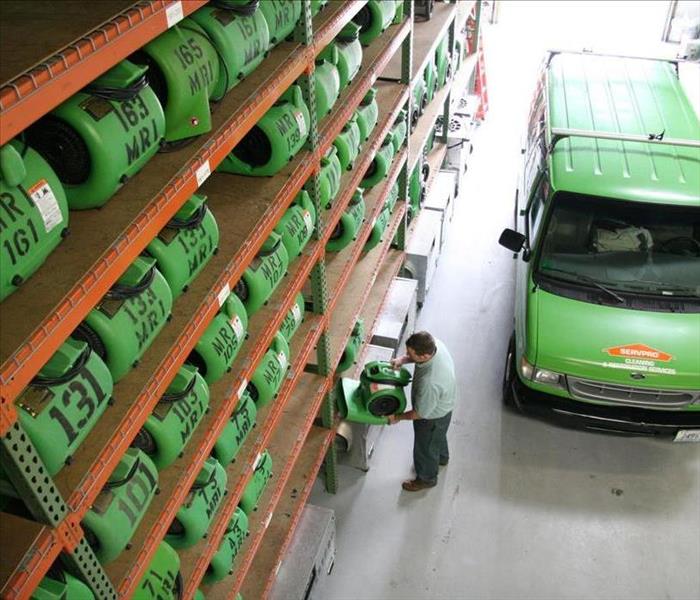What Damaged Materials Could Require Replacement After Water Damage in Boynton Beach?
10/15/2021 (Permalink)
 SERVPRO has the experienced technicians with the equipment and expertise your home needs after a water catastrophe. Give us a call right away.
SERVPRO has the experienced technicians with the equipment and expertise your home needs after a water catastrophe. Give us a call right away.
Our Team can Help Through Traditional Water Damage Restoration and Controlled Demolition/Replacement when Necessary.
Understanding the repair and reconstruction levels that often must accompany the restoration of water damages in Boynton Beach homes and businesses is critical to appreciate the scope of the recovery process. Many times, choosing a water restoration company only gives you access to restorers that can extract standing water and begin drying the property, but that is not the extent of what the structure needs. With our SERVPRO of Boynton Beach team, you get experienced restorers alongside competent building trade professionals for repairs and rebuilding.
When you consider the extent of water damage repair that Boynton Beach homes often need after situations like a pipe burst, you must think of not just the damaged elements but also accessing moist areas for efficient drying. Controlled demolition is a powerful tool in restoration and recovery, as this can provide our technicians immediate access to areas that require extraction and drying while giving our general contractors the space to repair damaged portions of the plumbing lines. Because utilities like the water lines are often hidden between the floors and walls, any plumbing concern can compromise several construction materials in the house.
Do Water Disasters Commonly Damage Walls?
While multiple areas of your residence can fall victim to substantial water damages, wall systems are often among the first grouping of construction materials to get damaged. Elements that make up entire wall systems are the closest to the bare or insulated water lines tucked neatly in the wall, so a break in one of these lines can thoroughly saturate these immediate structural components until you can turn the main supply of water off to the property. Wall systems are often comprised of four main elements:
- Drywall
- Insulation
- Wood Framing
- Utilities
While there are drying practices that can promote evaporative drying in wall cavities, the materials closest to the breach must often be removed to repair the waterline. These wall systems can get replaced entirely once the now exposed structural cavity gets dried with centrifugal air movers and positive pressure systems.
Do Floors Get Affected the Worst with Water Damage?
Because of water’s natural tendency to pool along the ground surfaces, flooring material is often the most heavily exposed after a substantial damage incident. Standing water collects on flooring and can begin penetrating these materials immediately. While some elements are often nearly impermeable, most of the flooring in your home, such as carpeting and wood planks, are vulnerable to absorption and subsequent degradation and deterioration.
- Carpeting – Carpets can begin to immediately absorb standing water and pose a substantial threat to subflooring material beneath the padding layer, which is often plywood or OSB board. Heavy saturation usually requires the removal of the carpet and padding to protect this underlying support.
- Wood Plank Flooring – The cellulose present in natural wood flooring can be a catalyst for water absorption that can allow for warping and distortion of planks. Our professionals can remove just the damaged planks to reduce the costs and time with replacing flooring.
- Tile – Ceramic tile is often among the most impermeable surface materials for water. However, when cracks and damage to the grouted joints already exist, water penetration can get underneath the tile and pop them loose.
How Do Ceiling Materials Become Damaged?
Since water lines can be stored between the first and second floors to make transitions to a second bathroom or other fixtures on this level, the potential for a break in these areas cannot be ruled out entirely. Spraying water or direct water flow can quickly overwhelm the exposed structural elements surrounding the waterline, such as the floor supports and cross beams for the second story and the drywall and insulation above the first story. It is often not challenging to identify when even a persistent leak on this line has developed, as drywall can quickly exhibit signs of oversaturation and damage such as bloating and swelling. Some signs that you can look for include:
- Oversaturation/Dripping
- Sagging Surface Materials
- Collapse
Substantial water disasters in residence require more than just our competent and knowledgeable restoration professionals to overcome. Our talented general contractors can help with repairs and build-back necessary for the property after water restoration, and mitigation stages are complete. You can count on the fast response of our SERVPRO of Boynton Beach team for mitigation and emergency services like a controlled demolition and water line repair. Give us a call today at (561) 413-9754.





 24/7 Emergency Service
24/7 Emergency Service